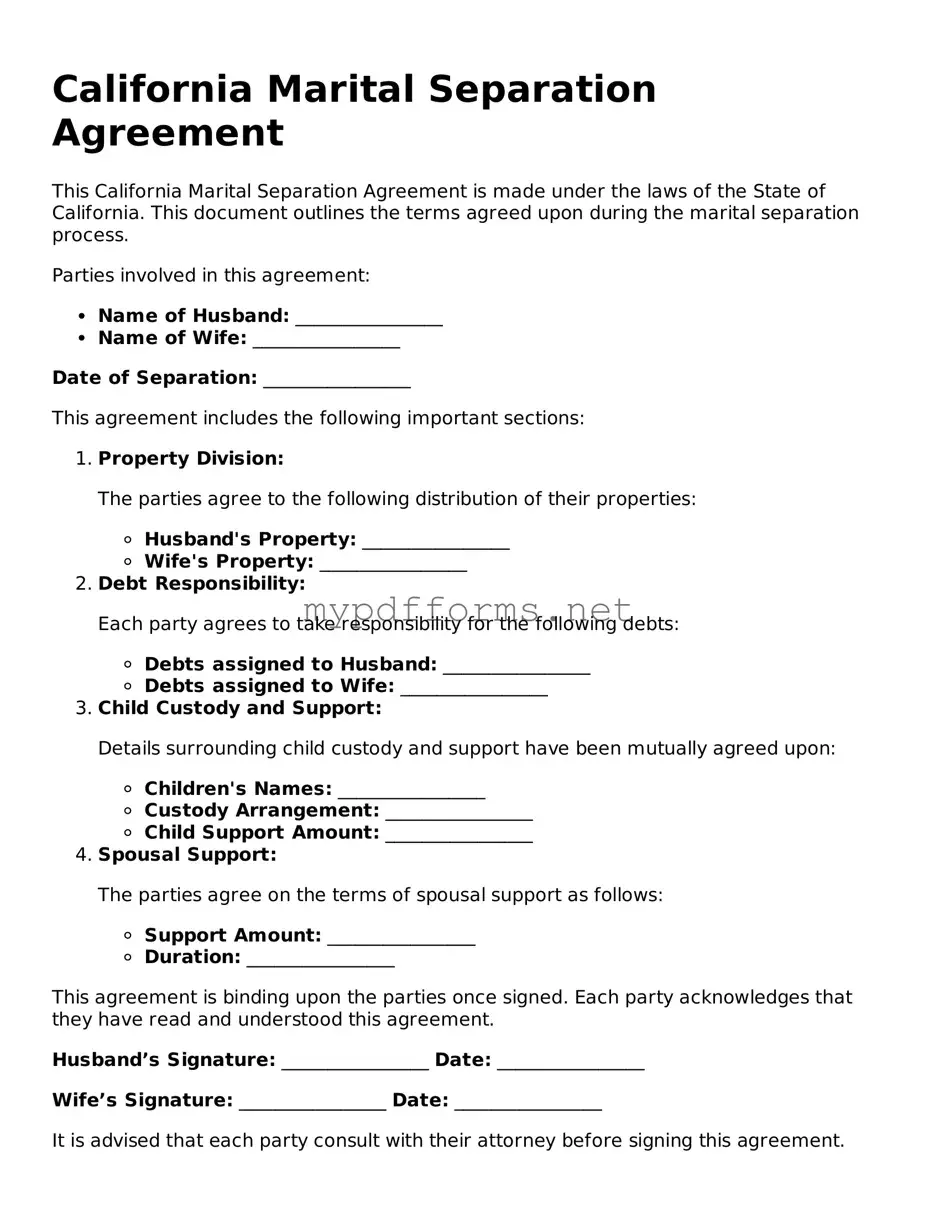The California Marital Separation Agreement is similar to a Divorce Settlement Agreement. Both documents outline the terms of the separation between spouses, including the division of property, debts, and arrangements for child custody and support. While a marital separation agreement can be used when couples choose to live apart without terminating their marriage, a divorce settlement agreement is finalized when the marriage is legally dissolved. Both documents require careful consideration and negotiation to ensure that both parties' rights and interests are protected.
Another document that shares similarities is the Separation Agreement. This document, often used in various states, serves a similar purpose by detailing the terms under which a couple will separate. Like the California Marital Separation Agreement, it covers aspects such as asset distribution, alimony, and child custody arrangements. However, the specific laws governing separation agreements may vary by state, making it essential for couples to understand the legal implications in their jurisdiction.
The Prenuptial Agreement is also comparable. While a prenuptial agreement is created before marriage to outline how assets will be divided in the event of a divorce, it can also address issues that may arise during a separation. Both agreements aim to protect individual assets and clarify financial responsibilities, but a prenuptial agreement is proactive, while a marital separation agreement is reactive to the circumstances of the marriage.
When considering the documentation required for a vehicle transaction in Illinois, it’s important to recognize the significance of legal forms such as the Illinois Motor Vehicle Bill of Sale, which provides a clear record of ownership transfer. You can find the necessary template for this document by visiting Illinois Forms, ensuring that all details are accurately recorded for a smooth sale process.
A Cohabitation Agreement is another relevant document. This agreement is often used by couples who live together but are not married. It sets forth the rights and responsibilities of each partner regarding property, finances, and other matters. Similar to a marital separation agreement, it helps clarify expectations and protect individual interests, especially if the relationship ends.
The Child Custody Agreement is closely related as well. This document specifically addresses the custody and visitation arrangements for children of the separating couple. While the marital separation agreement may contain provisions about child custody, a child custody agreement focuses solely on the welfare of the children and outlines the parenting plan in detail. Both documents are essential for ensuring that children's best interests are prioritized during a separation.
The Property Settlement Agreement also bears resemblance. This document specifically details how marital property and debts will be divided upon separation or divorce. While the marital separation agreement includes broader terms, such as spousal support and child custody, the property settlement agreement zeroes in on the equitable distribution of assets and liabilities, providing clarity to both parties.
Lastly, the Domestic Partnership Agreement can be likened to the California Marital Separation Agreement. This document is used by couples in a domestic partnership to outline their rights and responsibilities. Like the marital separation agreement, it can address property division, financial support, and child custody matters. Both agreements aim to protect the interests of the parties involved, though the domestic partnership agreement is specific to non-married couples who have chosen to enter into a legally recognized partnership.
